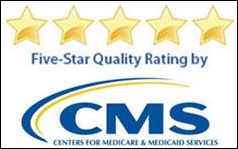EPtalk by Dr. Jayne 9/8/16

I recently received two pieces of paper correspondence from the Drug Enforcement Administration. In following up on them, I was surprised to find that the DEA had become a bit more tech savvy than some of the other federal agencies I interact with.
The first piece of mail addressed a then-upcoming change to its websites, requiring browsers to support a particular level of Transport Layer Security starting August 31. The letter also contained a helpful link to test your browser to see if it was compliant. I was most impressed that the DEA sent the letter more than four months prior to the requirement, which is refreshing considering the number of federal agencies that either don’t give adequate notice or continue changing the requirements down to the wire or after the bell. (MU or MACRA anyone?)
The second piece of correspondence was the renewal notice for my DEA registration, which is required to prescribe controlled substances. The letter stated that most people renewing online are able to complete the renewal within six minutes and print their new certificate immediately. I decided to time myself and am happy to report that as long as you have the required paperwork ready (including state license data and state controlled substance data) that you can definitely do it within six minutes. The only issue was that the receipt didn’t clearly show that I paid my $731, which I’ll need for tax purposes. I’m not about to try to hunt it down with them, so I’ll likely just attach my credit card bill to the sketchy receipt, earning me an eye-roll from my accountant but saving untold time.

Oregon Health & Science University has received a grant from the Office of the National Coordinator for Health IT (ONC) to offer a free course for informatics clinicians and professionals. Update in Health Information Technology: Healthcare Data Analytics will be offered in two-month blocks from October 2016 through May 2017. The course includes 14 modules that will take approximately 18 hours to complete and is offered online. Registration is open and took about a minute to complete. Topics include extracting and working with healthcare data, population health, identifying risk and segmenting populations, big data, interoperability, privacy/security, and natural language processing. It also provides the Maintenance of Certification credits that many of us need to keep our Clinical Informatics certifications.

My virtual inbox contained an update from CMS on their State Innovation Model (SIM). The goal of the SIM initiative, which started in 2013, was to support states in being “catalysts for healthcare transformation and the value of CMS’ collaboration with states.” The strategy is to change healthcare “to have a preponderance of payments to providers from all payers in the state be in value-based purchasing and/or alternative payment models.” States are encouraged to “use their policy and regulatory levers to accelerate” the change from volume to value. It went on to discuss the usual transformation strategies, such as moving primary care practices towards patient-centered models, integrating primary care with behavioral and social programs, community-based population health, and of course “payment reforms.”
I’ve been following many of these projects for years. They all use some combination of bonuses or penalties or regulations to try to drive behavior. They all seem to rely on the practice to figure out how to deliver, despite physicians not traditionally being trained in how to do these things or in how to really run a business. Many are based on payments related to a per-member, per-month calculation that changes as patients enter and leave the practice, which makes it difficult to adjust staffing. This in turn drives physicians to look at third-party firms who provide the services based on a PMPM calculation. Although this shields the physician from risk, it introduces outsiders into patient care, which may not be well-received by patients.
I had my own private practice for several years and wish CMS and other well-meaning organizations would talk more to actual in-the-trenches providers and less to academics and large institutions. Know what would have increased my propensity to perform care coordination? A grant to cover the salary of a care coordinator, not some shifting PMPM payment amount that came long after the fact. Not busy enough to justify a care coordinator for your solo practice? Set up practice-share arrangements between groups to cover the split FTEs. How about a public health nurse that can be embedded in community practices to address the complex psychosocial needs that many physicians don’t have time to address in a six-minute visit?
There has to be an answer other than, a) providers selling out to large medical groups or to hospital systems; b) providers retiring or leaving to do non-patient-facing work; or c) providers opting out of Medicare prior to the biggest boom in its utilization.
The SIM models look at “engaging and supporting providers that have not typically been connected to health IT” through required system implementation/data reporting, interoperability, and analytics. In Round 1 of the program, six states participated – Arkansas, Massachusetts, Maine, Minnesota, Oregon, and Vermont. Findings from Year 2 of the program include:
- Increase in Medicaid primary care provider participation in patient-centered home models (Arkansas)
- Alternative Payment Model participation approaching 50 percent of the state’s total population in Minnesota and Vermont
- Alternative Payment Model participation approaching 80 percent of Medicaid population in Oregon and Vermont
Multi-payer efforts have been used to address payment and delivery system reforms, but I wonder how much of the provider participation has been because providers actually want to participate and feel it’s in the best interests of the patients, or because of de facto coercion by payers and regulators? What do the actual quality numbers show? Is this truly improving care or just changing the cost of care? Do patients have greater access to providers who are adequately addressing their needs or just shuffling them through in order to meet the numbers?
The CMS blog cheerleads its way into saying it is “too early to attribute specific quantitative results directly to the SIM Initiative,” although overall states are reducing emergency department visits and inpatient readmissions through other models that pre-date SIM.
In the reality in which I practice, I still can’t see basic health information for patients who turn up at my urgent care except for pharmacy fill history, which we receive from a pharmacy benefit manager. This of course doesn’t help patients who pay cash for their medications or who are surviving on samples from their doctors’ offices. I practice in a major metropolitan area, for which there is no functional health information exchange and in which several major health system players compete to keep patients in network and have no incentive to share data. None of them are willing to partner with my practice (the largest urgent care provider around by volume) to share data or reduce costs.
Of the last 100 patients I saw, the vast majority of them had concerns that would have been best addressed by a primary care physician. Many patients didn’t have a PCP, and those who do reported access issues. We constantly trim our PCP referral list because physicians are closed to new patients. It drives me crazy that I’m personally contributing to the healthcare mess in my clinical practice while I work to clean it up in my informatics practice.
For the clinical informaticists out there, do you see the same kind of fractured healthcare continuum? Email me.

Email Dr. Jayne.
























What are the forthcoming minimum cybersecurity standards?